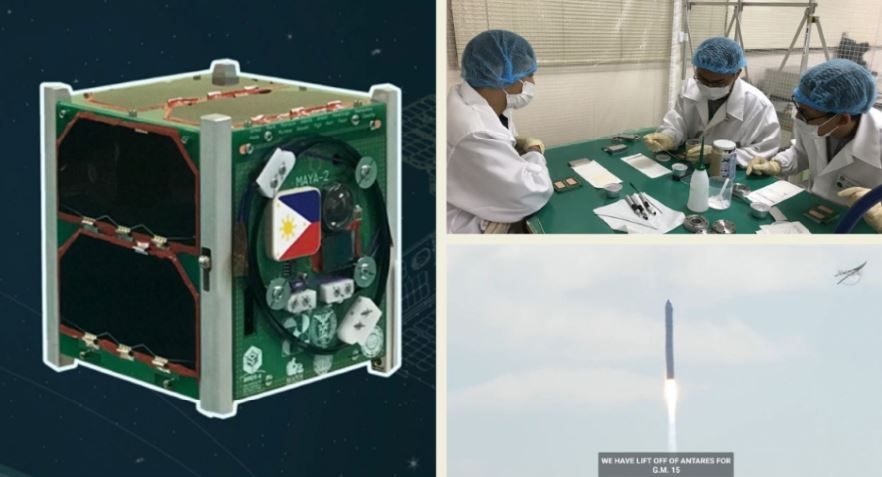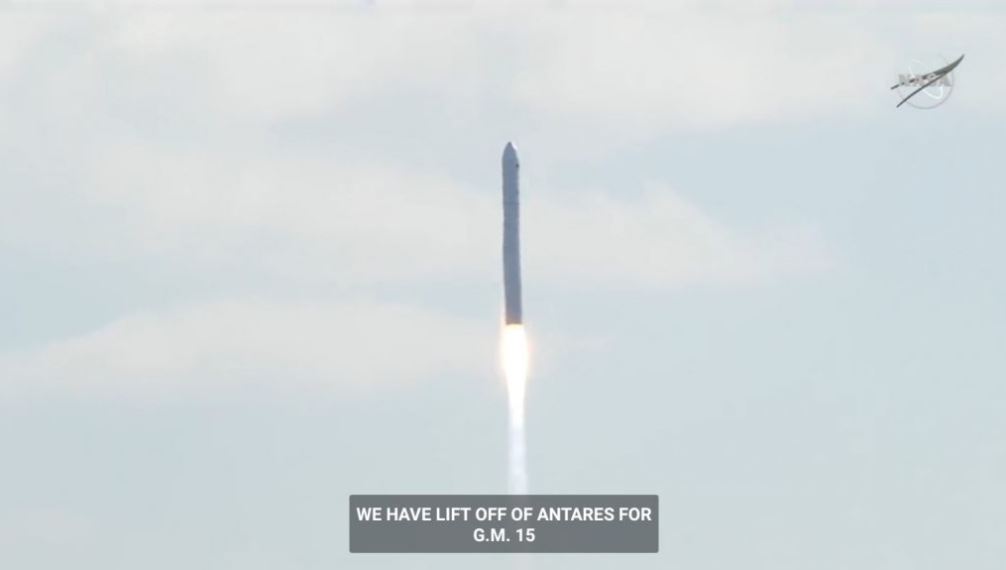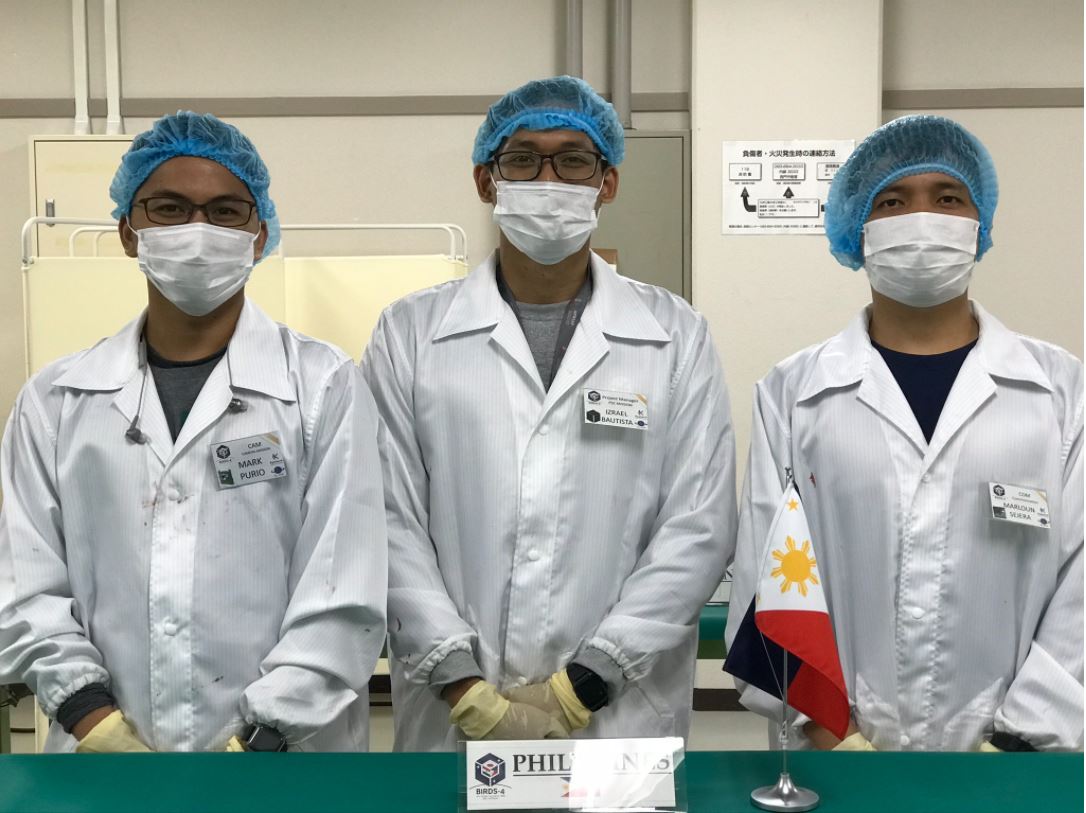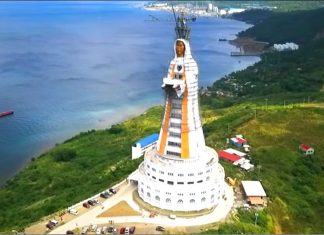
The Philippines’ second Maya Cube Satellite (CubeSat) developed by Filipino scholars under the 4th Joint Global Multi-Nation Birds Satellite project (BIRDS-4 Satellite Project) has been launched to the International Space Station (ISS).
The Maya-2 CubeSat, the successor to the Maya-1 CubeSat which completed its mission after 2 years, was seen on the NASA Live feed being successfully launched to the ISS from Earth aboard the S.S. Katherine Johnson Cynus spacecraft in the early hours of February 21, 2021, from NASA’s Wallops Flight Facility in Virginia. The ISS is the final step before the satellite reaches its targeted altitude in Low Earth Orbit.
The second cube satellite that is named after the Philippines’ former national bird, the Maya (Chestnut munia), falls under the nanosatellite category in terms of mass (1-10 kg).
The Philippines’ Maya-2 CubeSat is part of the Northrop Grumman CRS-15 mission which also launched two other identical CubeSats from Japan (Tsuru), and Paraguay (GuaraniSat-1).
The University of the Philippines-based STAMINA4Space and the Department of Science and Technology (DOST) reported that Filipino scholars BIRDS-4 Project Manager Izrael Zenar Bautista (MS Energy Engineering from the University of the Philippines Diliman), BIRDS-4 Project member Mark Angelo Purio (MS Electronics Engineering from the De La Salle University), and BIRDS-4 Project member Marloun Sejera (MS in Electronics and Communications Engineering from the Mapúa Institute of Technology) developed the new CubeSat under the Kyushu Institute of Technology (Kyutech)’s 4th Joint Global Multi-Nation Birds Satellite (BIRDS-4) Project.

The Filipino engineers were sent to study in doctoral programs at Kyutech through the Space Science and Technology Proliferation through University Partnerships (STeP-UP) Project of the Space Technology and Applications Mastery, Innovation and Advancement (STAMINA4Space), a program funded by DOST Philippines, monitored by DOST’s Philippine Council for Innovation, Energy, and Emerging Technology Research and Development (DOST-PCIEERD), and implemented by DOST’s Advanced Science and Technology Institute (DOST-ASTI), and the University of the Philippines Diliman (UPD).
Maya-2 has similar platforms to Maya-1 and was developed and improved using the knowledge gained from developing its predecessor.
Like its predecessor Maya-1 (decommissioned on November 23, 2020), Maya-2 is a technology demonstration and educational platform geared to collect data remotely by Store-and-Forward (S&F) Mechanism. Aboard the 1.3 kg satellite is a camera for image and video capture, an Automatic Packet Reporting System Message Digipeater (APRS-DP), attitude determination and control units for active attitude stabilization and control demonstrations, Perovskite solar cells, and Latchup-detection chip.
The development of Maya-2 under the BIRDS-4 Project started in 2018 and was affected by the COVID-19 pandemic. Although they faced hurdles, the team of Filipino engineers was able to power through.
“The development of Maya-2, and BIRDS-4 satellites in general, was special due to the fact that it was affected by the pandemic… Not being able to gather physically also add to the challenges we faced during the final stages of the project as most of the work such as troubleshooting and finalizing software and satellite assembly were done with less people from the team,” Engr. Mark Angelo Purio detailed the challenges they faced.

“As of now, the team is finalizing the mission operation for the first 24 hours, first week, and first month. We are also preparing to coordinate with ground stations of the BIRDS network to ask for their help and cooperation in operating the satellites once deployed in orbit,” said BIRDS-4 Project Manager Engr. Izrael Bautista.
After deployment into orbit, the team will immediately start carrying out the satellite’s missions.
The Philippines is poised to launch more Maya CubeSats in the future with Maya-3 and Maya-4 scheduled to be launched also in 2021, and Maya-5 and Maya-6 already in their respective design and development phases under the STeP-UP project led by Professor Paul Jason Co.
Prof. Co said the satellites use commercial off-the-shelf (COTS) components to verify proper function in space and the information gathered from BIRDS-4 will form the basis for the usage of these COTS components for future space missions.
DOST notes that these satellite projects are seen to further intensify the efforts of the country to harness the power of satellite technology for other purposes like those for agriculture, forest cover and natural resources inventory, weather forecasting, and disaster damage assessment and monitoring, among others.
“Maya-2 is the manifestation of our country’s commitment to build and sustain our own SSTA ecosystem,” Co said. “This is but another step in our long journey as a space-faring nation.”
DOST Secretary Fortunato T. de la Peña adds that the Maya-2 is the country’s fourth satellite that was launched through the International Space Station (ISS). Diwata 1 and Diwata 2, both microsatellites, were launched in March 2016 and October 2018, respectively, while Maya-1 was launched in June 2018.
WATCH the launch here and SEND CHEERS in the comment below as the Philippines’ 2nd Maya CubeSat developed by Filipino scholars journeys to the international space station and eventually into space orbit!
Are you a Proud Filipino? Get more good news stories on Filipino Pride! Subscribe to GoodNewsPilipinas.com and our YouTube channel: Good News Pilipinas! TV










